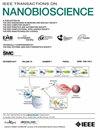ag掺杂ZnO纳米粒子:抗癌、抗菌和可回收光催化剂的多功能纳米材料。
IF 4.4
4区 生物学
Q1 BIOCHEMICAL RESEARCH METHODS
引用次数: 0
摘要
采用共沉淀法制备了银掺杂氧化锌纳米粒子(Ag-ZnO NPs)。XRD分析揭示了ZnO纳米颗粒的六方结构特征。Ag-ZnO NPs的XRD谱图中峰的强度逐渐减弱,表明Ag金属成功地掺入到ZnO晶格中。通过能量色散x射线光谱(EDX)进行元素组成验证,而FTIR光谱则阐明了ZnO和Ag纳米颗粒中存在的官能团。采用3%银掺杂的方法克服银在较高浓度下的毒性。值得注意的是,Ag-ZnO NPs在降解亚甲基蓝的四个循环中表现出了非凡的、可重复使用的光催化能力。此外,Ag-ZnO NPs对大肠杆菌ATCC 27853、伤寒沙门氏菌CT18、金黄色葡萄球菌NCTC8325和枯草芽孢杆菌QST 713等病原菌均有较强的抗菌作用。值得注意的是,这些纳米颗粒对人肝癌细胞系Hep-G2也表现出显著的抗癌活性。银掺杂氧化锌是一种很有前途的抗废水染料污染的资产,在肝癌治疗中具有很好的应用前景。本文章由计算机程序翻译,如有差异,请以英文原文为准。
Ag-Doped ZnO Nanoparticles: A Versatile Multifunctional Nanomaterial for Anticancer, Antibacterial, and Recyclable Photocatalyst
Silver doping into zinc oxide nanoparticles (Ag-ZnO NPs) were prepared via the co-precipitation method. The XRD analysis revealed the hexagonal structure characteristic of ZnO nanoparticles. The diminishing intensity of the peaks in Ag-ZnO NPs’ XRD pattern indicated the successful incorporation of Ag metal within the ZnO lattice. Elemental composition validation was performed through energy-dispersive X-ray spectroscopy (EDX), while FTIR spectroscopy elucidated the functional groups present in both ZnO and Ag nanoparticles. A judicious approach of 3% silver doping was employed to overcome silver’s toxicity potential at higher concentrations. Remarkably, the Ag-ZnO NPs exhibited exceptional, reusable photocatalytic prowess over four cycles in the degradation of methylene blue. Furthermore, the Ag-ZnO NPs showcased potent antibacterial efficacy against select pathogens, including Escherichia coli ATCC 27853, Salmonella typhi CT18, Staphylococcus aureus NCTC8325, and Bacillus subtilis QST 713. Notably, these nanoparticles also exhibited significant anticancer activity against Hep-G2, a human hepatoma cell line. Silver-doped zinc oxide emerges as a promising asset against wastewater dye pollution and holds promising applications in liver cancer.
求助全文
通过发布文献求助,成功后即可免费获取论文全文。
去求助
来源期刊

IEEE Transactions on NanoBioscience
工程技术-纳米科技
CiteScore
7.00
自引率
5.10%
发文量
197
审稿时长
>12 weeks
期刊介绍:
The IEEE Transactions on NanoBioscience reports on original, innovative and interdisciplinary work on all aspects of molecular systems, cellular systems, and tissues (including molecular electronics). Topics covered in the journal focus on a broad spectrum of aspects, both on foundations and on applications. Specifically, methods and techniques, experimental aspects, design and implementation, instrumentation and laboratory equipment, clinical aspects, hardware and software data acquisition and analysis and computer based modelling are covered (based on traditional or high performance computing - parallel computers or computer networks).
 求助内容:
求助内容: 应助结果提醒方式:
应助结果提醒方式:


